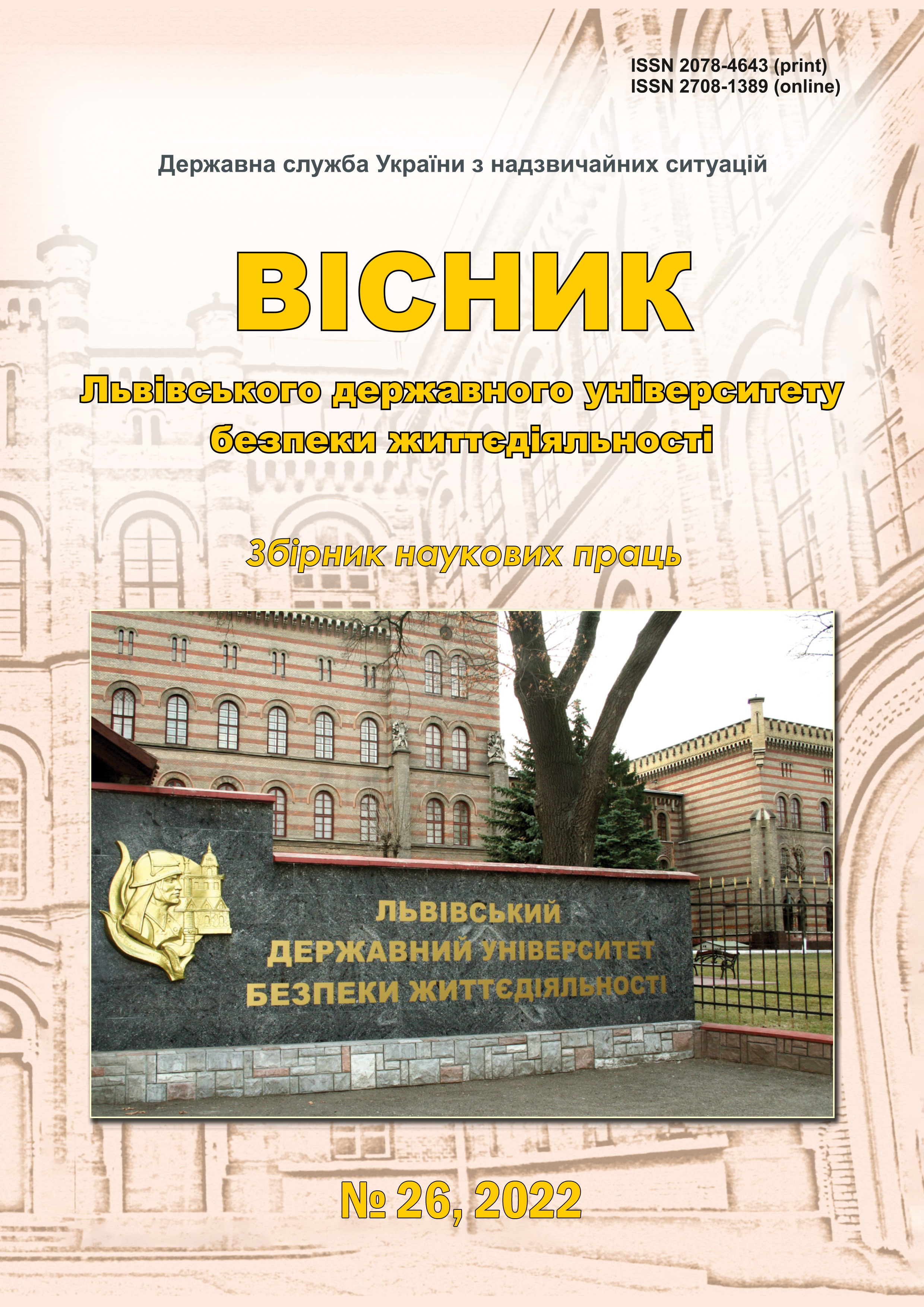ВИЗНАЧЕННЯ ПАРАМЕТРІВ РУХУ ЕВАКУАЦІЙНИХ ПОТОКІВ ІЗ ЗАСТОСУВАННЯМ ШТУЧНИХ НЕЙРОННИХ МЕРЕЖ
Анотація
Вступ. Незважаючи на наявність сучасних програмно-імітаційних комплексів, параметри руху учасників евакуації для цих комплексів визначаються шляхом встановлення залежностей між щільністю потоку та швидкістю руху учасників евакуації. Виявити ці залежності можна загалом за результатами польових спостережень та обробки відеозаписів цих спостережень, що займає багато часу та потребує великих зусиль і свідчить про необхідність автоматизації та оптимізації процесу обробки відео.
На особливу увагу заслуговують інструменти аналізу та класифікації зображень, а також виявлення та класифікації рухомих об’єктів у відеопотоці, які можуть бути успішно використані для вивчення проблем евакуації у разі пожежі.
Метою статті є розробка концептуальної моделі програмної системи із застосуванням штучних нейронних мереж для формування баз емпіричних даних параметрів руху евакуаційних потоків на основі аналізу даних відеопотоку.
Методи дослідження. Описано вирішення задачі класифікації учасників евакуації за групами мобільності із використанням методів машинного навчання, зокрема методу зворотнього поширення похибки, що базується на алгоритмі градієнтного спуску.
Основні результати дослідження. У роботі наведено концептуальну модель для визначення параметрів руху евакуаційних потоків за даними камер відеоспостереження із застосуванням штучної нейронної мережі та алгоритму SORT. Запропоновано архітектуру згорткової нейронної мережі для вирішення задачі класифікації учасників евакуації за групами мобільності, представлену двома згортковими шарами, двома шарами субдискретизації, двома прихованими повнозв’язними шарами та вихідним класифікаційним шаром нейронів.
Наведено модель для визначення швидкості руху учасників евакуації на основі алгоритму SORT. Висновок. Реалізація запропонованої концептуальної моделі дає можливість отримувати значення миттєвої швидкості руху учасників евакуації з їх зберіганням до окремого файлу, що суттєво пришвидшує процес формування баз емпіричних даних параметрів та має важливе практичне значення для подальших наукових досліджень процесів евакуації змішаних людських потоків під час пожежі.
Завантаження

Ця робота ліцензована відповідно доCreative Commons Attribution 4.0 Міжнародної ліцензії.










